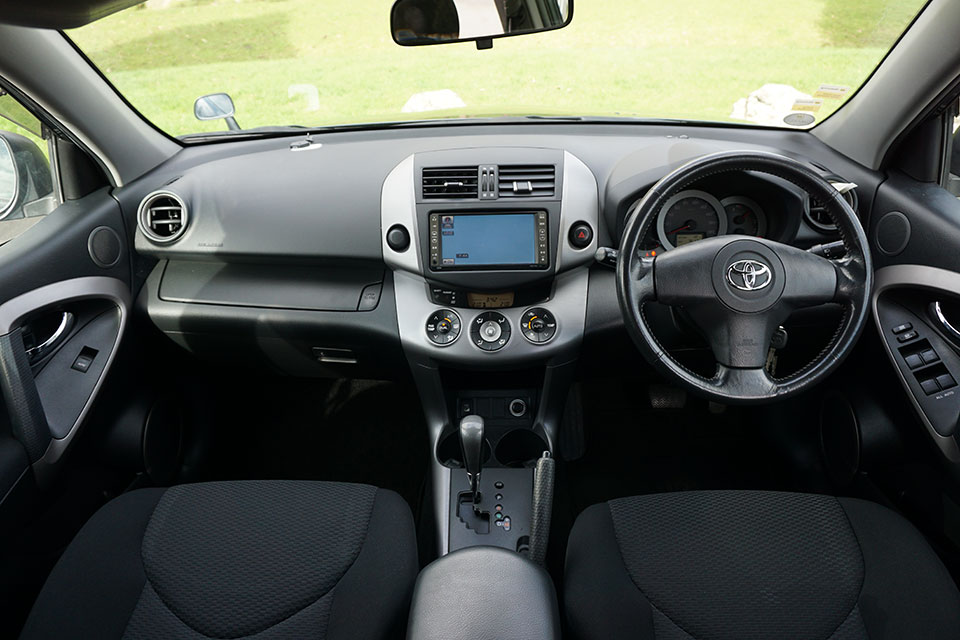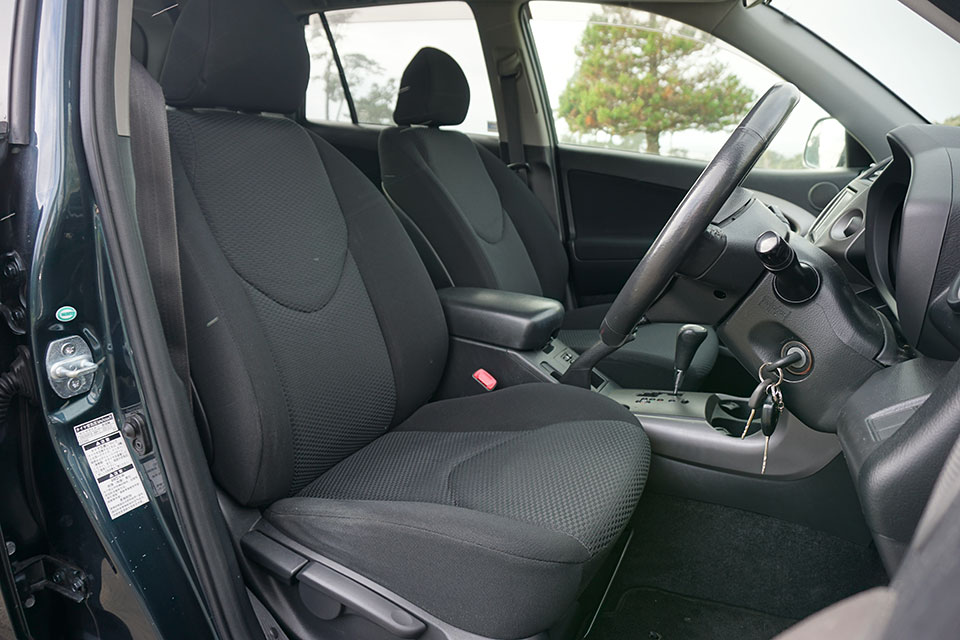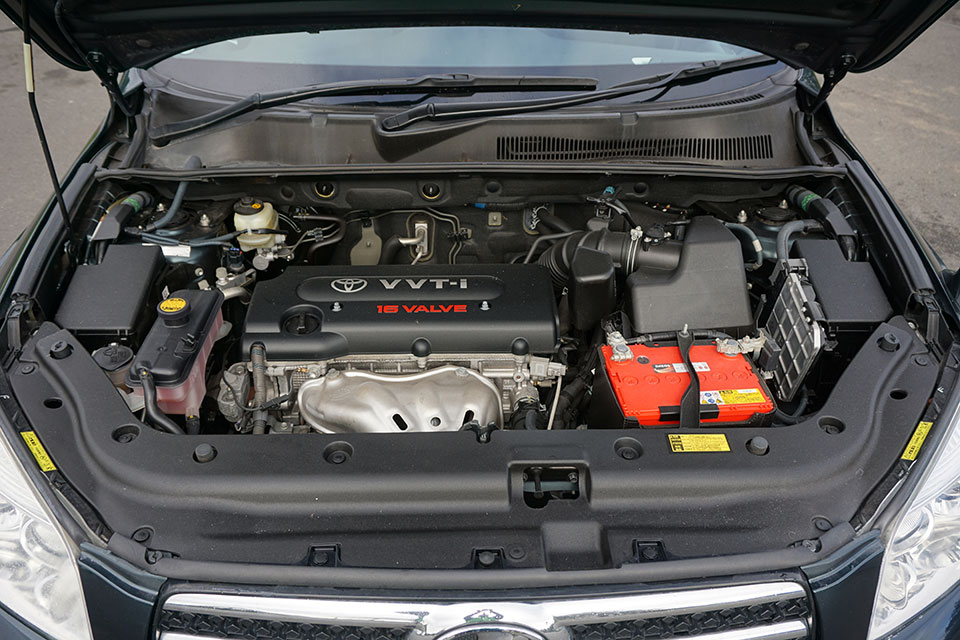Toyota RAV4 (Japanese import) 2005-2015 used car review
The Japanese-import Toyota RAV4 is a city-friendly SUV with a flexible interior and powerful engine.

The Japanese-import Toyota RAV4 is a city-friendly SUV with a flexible interior and powerful engine. It lacks the roominess of its local equivalent.
Toyota was early to the market for small SUVs with the RAV4, which set the standard. It was such a success it rapidly grew larger for international markets – including New Zealand. That made it too big for Japan’s small parking spaces.
While this used import RAV4 looks the same as the New Zealand-new version, it is significantly shorter - by more than 200mm. That makes it easier to park but eats into the boot and rear-seat room and cuts the interior volume by 21%.
This car remained on the market for ten years and was available four years after the new model went on sale. The NZ-new car is sold in Japan as the Vanguard.
Inside and out
The RAV4 makes no attempt to look like a rugged SUV – it’s more like a stretched family hatchback with round, soft lines. Our Sport version is set apart from others by its modern-looking, high-intensity headlights, rear spoiler, widened wheel arches and 18-inch alloy wheels.
A spare tyre under a hardcover partially blocks the rear window. Park this RAV4 against a New Zealand-new version and you can see where the length is missing - the third window and rear quarters of the car are visibly shorter.
The dashboard looks more like that of a sports car than an SUV. The instruments and steering wheel have a sporty design and the interior styling is closed in and curvy. Our review vehicle features a touchscreen infotainment system that will need a band expander to receive local stations.
The navigation function cannot be updated to New Zealand maps. All versions of the RAV4 sold in Japan feature air-conditioning with separate temperature settings for driver and passenger. There are two large gloveboxes, set one above the other, in front of the passenger.
The front seats are comfortable even though you sit very upright. The cabin feels quite narrow in the front for this size of car and larger passengers could find themselves rubbing elbows. The rear seat can slide backwards and forwards, allowing for more or less boot space or legroom – which at the seat’s most rearward position is plentiful.
The window seats are wide and comfortable but the centre position is compromised by the seatback essentially being a folded up armrest – adults will not find it comfortable.
The boot is the biggest difference in the imported RAV4; it is significantly smaller. There is an additional storage space under the floor. We could not find a particular volume for this model. With the seats positioned for the most rear legroom, only two large suitcases will fit, inadequate for a family vehicle. Slide the seat forward and an additional medium-size case will fit.
On the road
While New Zealand-new RAV4s came with the choice of petrol or diesel engines and multiple transmissions, there is no choice in the Japanese cars. The only drivetrain is a 2.4-litre four-cylinder petrol engine paired to a CVT automatic transmission which can be shifted manually.
X and G models have the option of front-wheel drive or all-wheel drive and the Sport is all-wheel drive only. The engine produces a healthy 136kw and 233Nm, which is plenty to make the car zippy around town. Even with a load on board, performance on the open road is still healthy.
The transmission, like all CVT automatics, is exceptionally smooth and doesn’t make the engine rev high as some do. Handling is acceptable and safe for this type of car. The steering is light and easy but offers little feedback or feel.
There is plenty of grip, although the all-wheel drive is going to make a difference only in very slippery conditions. The ride in the Sport model is comfortable if a little firm. We found the ride a bit choppy with the car bouncing a small amount over city road imperfections. The brakes did a good job of pulling the car up. It is impressively quiet and outside noise is kept out well.
Can you take the RAV4 off-road? Yes, though not far. It is essentially a normal car with a raised ride height. A grass field, rutted gravel road or ski field road are about as far away from the tarmac on which it will feel comfortable. Hill descent control is standard.
Visibility forward from the driver's seat is good and you can easily see over the nose of the car.
Rear visibility is not as good and only post-2007 cars only have the option of a reversing camera, which appears in the rear-vision mirror. If the vehicle you are considering does not have a camera, we suggest adding one. Fitting a camera yourself costs from $50 or a professional will do it from $200.
We could not find an official tow rating for the used import RAV4. The New Zealand-new car can tow up to 1,600kg braked, though this car is larger and uses a different transmission. We found aftermarket tow bars with ratings of up to 2,000kg braked (a small to medium-sized trailer boat).
Safety
RightCar lists the used import RAV4 (2006-2012) as having a four-star Used Car Safety Rating, based on real-world crash data. Standard safety specifications are low, with only driver and passenger airbags, anti-lock braking and electronic brakeforce distribution as standard.
Electronic stability control is an optional extra and can be identified by a ‘VSC’ light on the dashboard appearing when the car is turned on. The New Zealand-new version features additional airbags and more common fitment of electronic stability control.
ISOFIX child seat mounts can be found in the rear seat window positions. All three rear seats feature a full shoulder-style belt, which offers more protection than a lap-only belt.
Reliability
The Toyota RAV4 is considered one of the more reliable options in the small SUV market, although it does have some issues. Its engine features a timing chain that does not need to be replaced regularly.
The 2.4-litre engine can, in some cases, begin to consume more engine oil than usual. This is a rare - Toyota has fixed some batches of cars in Japan, although there is a chance some were not caught. Repair is expensive and involves an engine rebuild, including a new piston assembly. It is advisable to check the oil level regularly and if consumption is high have the engine looked at.
Rear shock absorbers are prone to wear and are frequently replaced when the car is entering New Zealand as part of the compliance process. The rear shocks wear out faster than the front ones. If you find your RAV4 is handling poorly or moving around under brakes, have the shocks checked. Replacement will cost $200-$300 each.
Later models are known to have issues with the steering intermediate shaft. That can be identified by a knock when steering at low speeds. Having this fixed will cost from $500.
The interior plastics quality of the later RAV4s is not considered to be as high in quality as earlier ones. They should prove durable but do not look or feel as nice.
Cost of ownership
Toyota recommends servicing the RAV4 every 12 months or 15,000km, whichever comes first. Services cost around $300 each. A major service at 90,000km, including brake and transmission fluids, costs around $800.
RightCar estimates that over 14,000km of driving a year, a RAV4 will cost $2,380 to fuel. The 60-litre fuel tank will cost $120 to fill at $2 per litre and should take you 650km before the fuel light comes on.
A vehicle licence for the RAV4 costs $76.92 a year, with the car in the cheapest ACC levy group.
Trade Me Insurance estimates insurance for a RAV4 valued at $11,880 will cost $48.36* per month. This is more than $1 cheaper a month than the New Zealand-new version.
Buyers’ guide
Japanese import RAV4s are available on Trade Me priced from $10,000 to $25,000 for later and lower mileage vehicles. You can distinguish an import by its badge – it does not feature a Toyota emblem on its nose. Since 2012 the import model has been an entirely different design to that sold locally.
Variants
- X – Features steel wheels, separate temperature settings for the driver and passenger, CD player stereo, anti-lock brakes, electronic brakeforce distribution, and driver and passenger airbags.
- G– Adds keyless entry and start, high-intensity headlights, 17-inch alloy wheels, leather steering wheel, cruise control and tinted windows.
- Sport – Similar to the G. Adds wide body kit, 18-inch alloy wheels and fog lights. Keyless entry and start, and cruise control are optional.
Timeline
- 2006 Launched in Japan
- 2007 Receives a cosmetic facelift
- 2011 Receives a further cosmetic facelift
- 2015 Production ends
Details
2007 Toyota RAV4 (Japan) Sport
$11,000 to $22,000 for models which have travelled 70,000 to 120,000km
2.4-litre four-cylinder136kW/233Nm (claimed)
CVT automatic, all-wheel drive
Four-star Used Car Safety Rating
12,000km or 12 months
Full size wheel
8.5-litres per 100km (claimed)
Regular
4395mm
1815mm
1685mm
Unofficial: Up to 2,000kg braked.
10m
This review covers the Toyota RAV4 (Japanese import) for model years 2005, 2006, 2007, 2008, 2009, 2010, 2011, 2012, 2013, 2014 and 2015.
Review vehicle supplied by City Motor Group.
*Our insurance estimates are based on a 35-year-old male with no accidents in the last two years, garaging the car in Mission Bay, Auckland. The car is not used for business and will cover 10,000km to 20,000km a year. We estimate with no option add-ons and $500 excess. Customise your estimate at Trade Me Insurance.
Image gallery
Also consider






